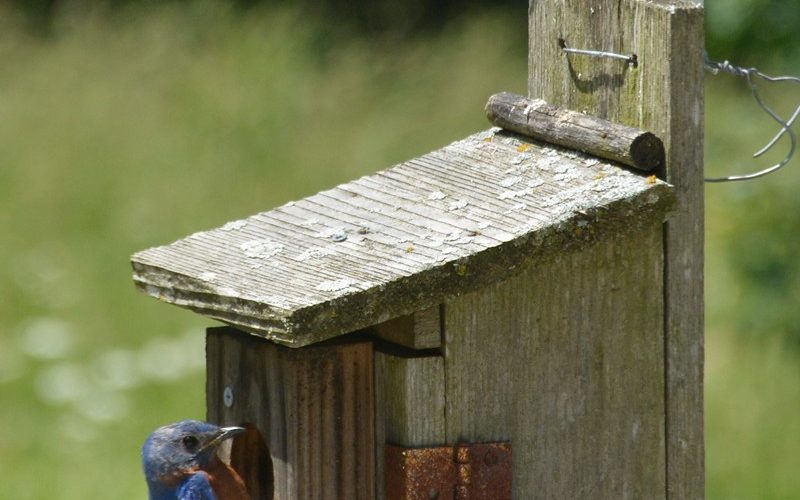Nest box draws in scores of applicants
AMANDA BANCROFT
Making Ripples
Nesting season is off to a flying start, and some species are already into their second broods. But don’t worry if you’re late putting up the nest box; there are plenty of families that still need a good home! At my house, several species of birds were fighting over a recently installed nest box the morning after it was erected. The romantic appeal of a vacant site must be strong.
The eastern bluebirds won. Next, they had to decide which among them would get the right to use the box, as several tried to use it at the same time, and civil war broke out. The victorious male wasted no time. He inspected the box inside and out, pecking a few spots and contorting his head in every direction for reasons only he knows. After it met his approval, it was time to convince the female. He perched on the pole upon which the box was mounted, then sang vigorously all morning for several mornings. The female was content to eat insects in the grass nearby.
The persistent male even got inside the nest box and sang from the hole, his throat bloating with each call. The female landed on top of the box, inspected the entrance, and eventually decided she liked the place. We were worried the box tilted too far to one side. They weren’t. We were concerned that noise from the lawn mower or the electricity generator would deter nesting. It didn’t. The pair did not mind tea on the balcony, nor a morning qi gong routine. They were interested in one thing: building that nest!
The male, being the cheerleader of the project, encouraged the female to gather nesting material and bring it to the box. At intervals, he landed on the box and sang to the female, wing-waving at her and sometimes at nobody. (Wing-waving is what it sounds like: one wing is lifted up and down quickly.)
The female, for her part, was industrious. She brought back beaks full of dried grass that gave the appearance of a moustache. Often, she’d bring a piece over three feet long, fly into the hole, and leave the rest dangling outside, eventually pulling it inside the box where she formed the grass into a nice cup shape. Soon, she’ll be laying one egg every morning in that cup (up to five total).
If all goes well, she’ll incubate the eggs for 11 to 19 days, and brood the hatchlings for 17 to 19 days with feeding assistance from the male. Upon fledgling, the male might be left feeding the young while the female builds a new nest. It’s a perilous world out there for birds, but we can make it safer. If you do put up a nest box, use predator guards, clean out old soiled nests to prevent disease, apply soap on the inside ceiling to deter wasps and Vaseline on the pole to stop fire ants. Join the romance at NestWatch.org to learn more!
Amanda Bancroft is a writer, artist, and naturalist living in an off-grid tiny house on Kessler Mountain. She and her husband Ryan blog about their adventures and offer tips to those wanting to make a difference at www.RipplesBlog.org.










